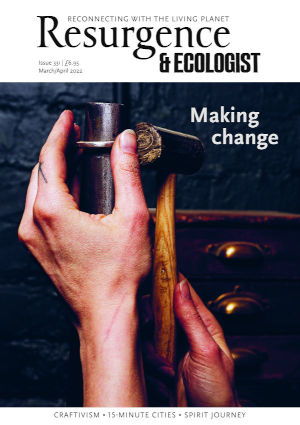In the 1970s, long before he became one of the UK’s most influential land artists, David Nash was a driven young man in search of a unique drawing technique. But even at this early stage, one aspect of his work was already highly individual: his modus operandi. He would lay ten sheets of paper on a home-made drawing board, hang it from his neck with a strap so that he looked like an off-duty cinema ice-cream vendor, and head out to look for a subject. “The point was for the subject to challenge me to find its unique marks. I wanted to avoid developing a style.”
In the woods, working rapidly ...
There are approximately 1144 more words in this article.
To read the rest of this article, please buy this issue, or join the Resurgence Trust. As a member you will receive access to the complete archive of magazines from May 1966.
If you are already a member, please Sign in






